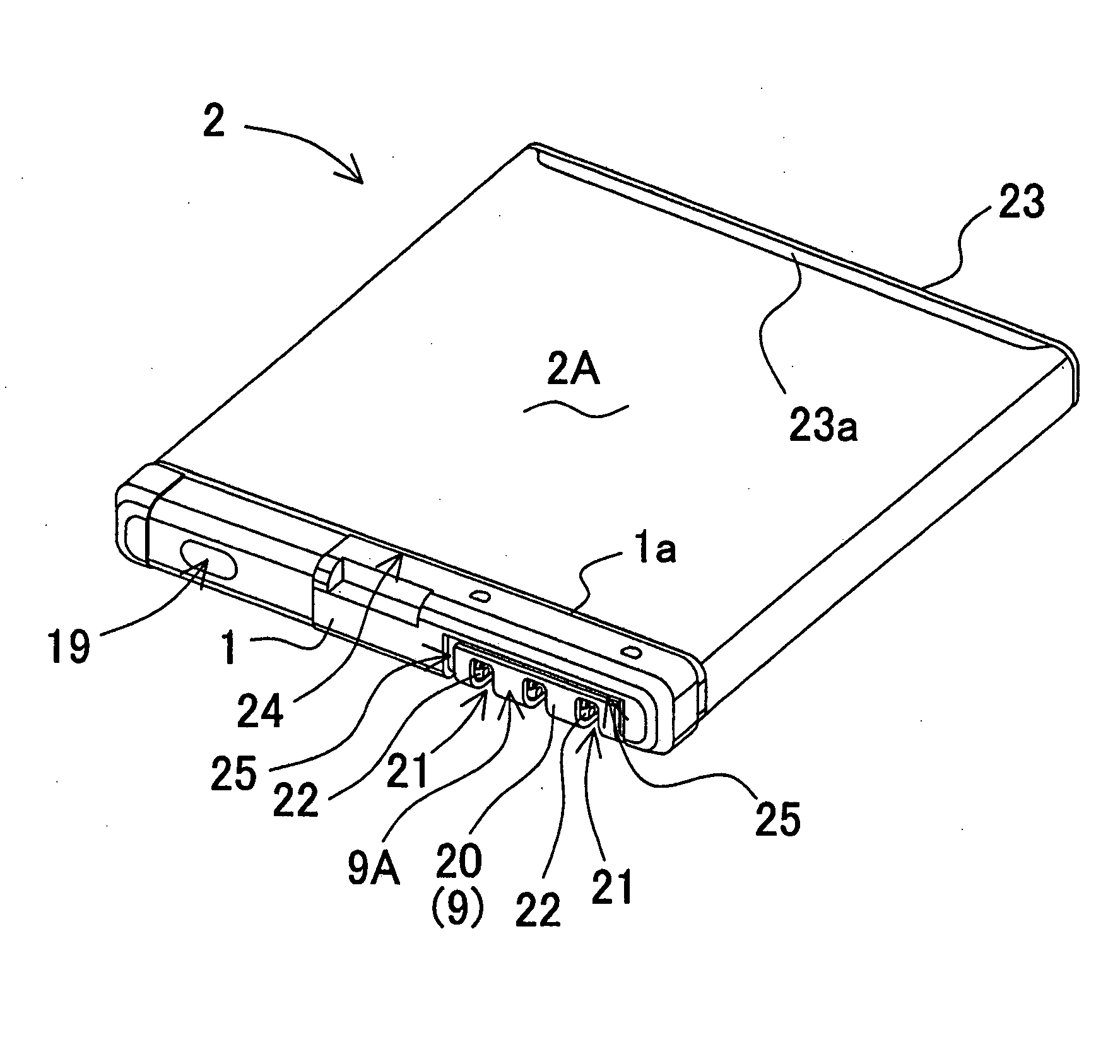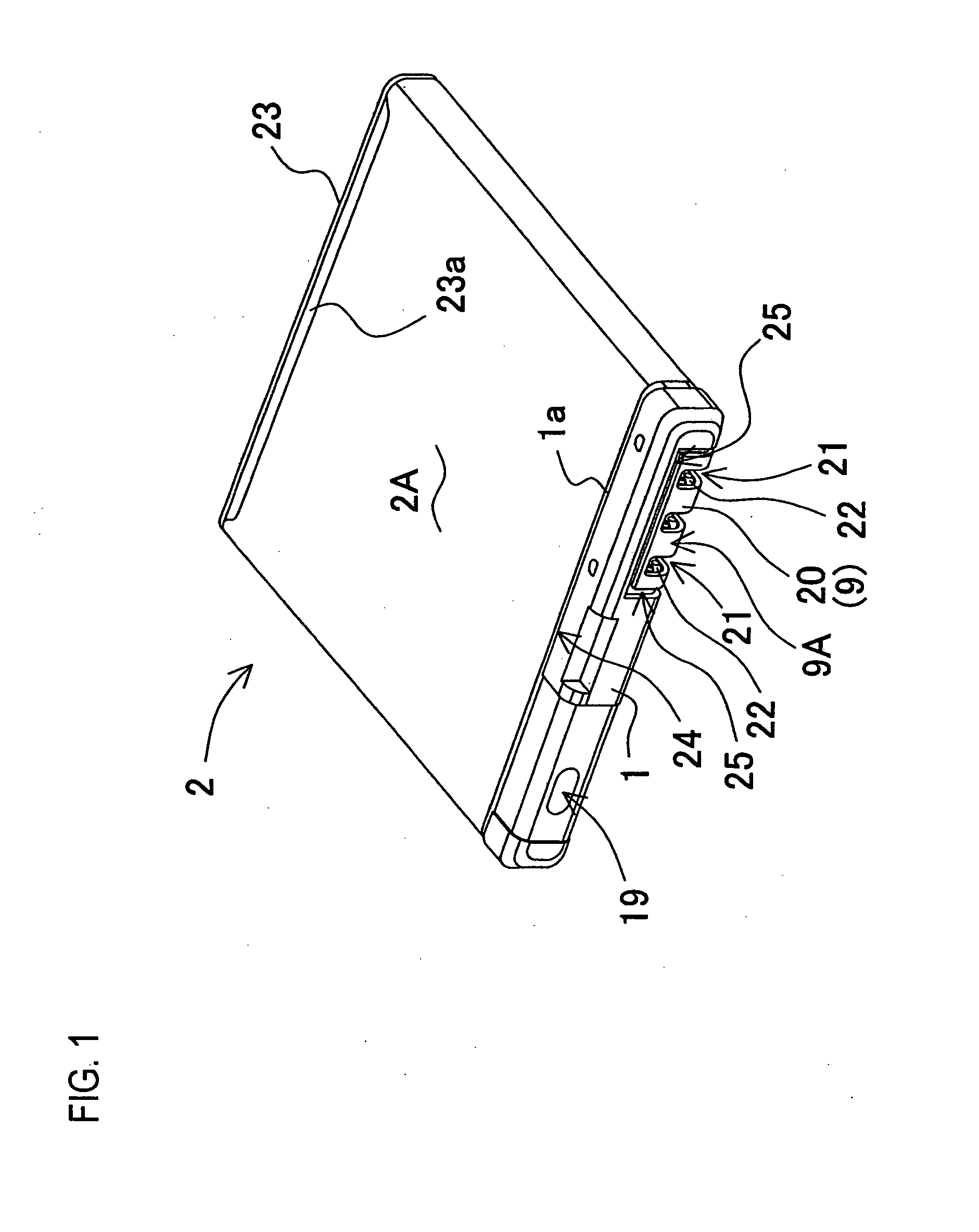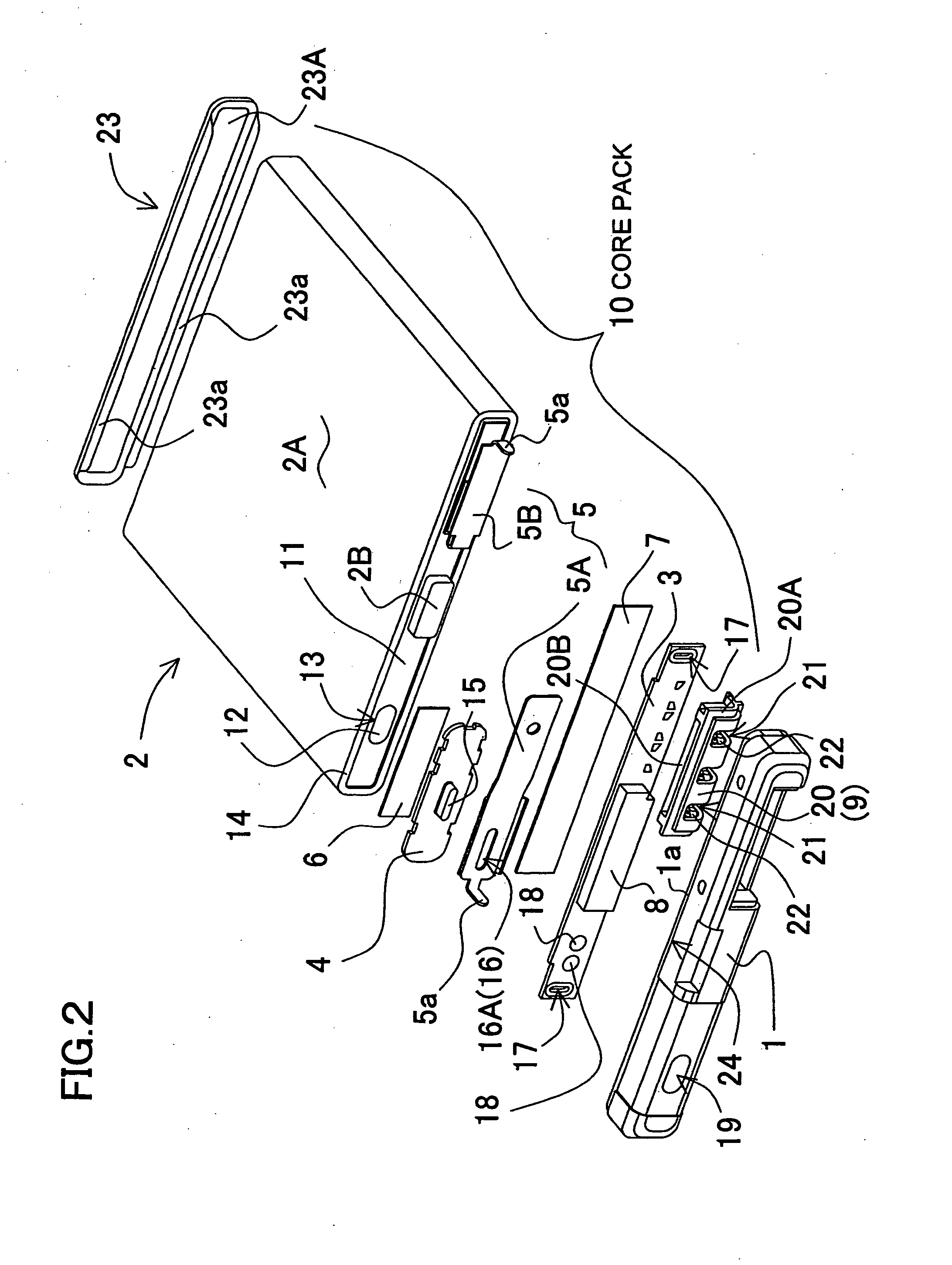Battery pack
a battery pack and core pack technology, applied in the field of batteries, can solve the problems of difficult to achieve mass production of core packs with efficiency, easy to be split between, leakage of plastic materials,
- Summary
- Abstract
- Description
- Claims
- Application Information
AI Technical Summary
Benefits of technology
Problems solved by technology
Method used
Image
Examples
Embodiment Construction
)
[0027]The battery pack shown in FIG. 1 through FIG. 4 is produced by insert-molding a battery core pack 10 into a resin molded portion 1. FIG. 2 is an exploded perspective view of the battery pack. In order to facilitate a better understanding of each individual component, this Figure shows a separated state of a resin molded portion 1, a circuit board 3, a connector 9, a lead plate 5, an insulation cover 4, and a unit cell 2. In the process of forming the resin molded portion 1 for the battery pack, the circuit board 3 to which the connector 9 is fixed, the lead plate 5, and the insulation cover 4 are inserted into the resin molded portion 1. Therefore, when the resin molded portion 1 has been formed of a plastic material, the battery core pack 10 comes to be integrally structured with the resin molded portion 1. In the illustrated battery pack, a part of the battery core pack 10 is insert-molded into the resin molded portion 1, but the present invention does not limit the part of...
PUM
| Property | Measurement | Unit |
|---|---|---|
| distance | aaaaa | aaaaa |
| thickness | aaaaa | aaaaa |
| thickness | aaaaa | aaaaa |
Abstract
Description
Claims
Application Information
 Login to View More
Login to View More - R&D
- Intellectual Property
- Life Sciences
- Materials
- Tech Scout
- Unparalleled Data Quality
- Higher Quality Content
- 60% Fewer Hallucinations
Browse by: Latest US Patents, China's latest patents, Technical Efficacy Thesaurus, Application Domain, Technology Topic, Popular Technical Reports.
© 2025 PatSnap. All rights reserved.Legal|Privacy policy|Modern Slavery Act Transparency Statement|Sitemap|About US| Contact US: help@patsnap.com



